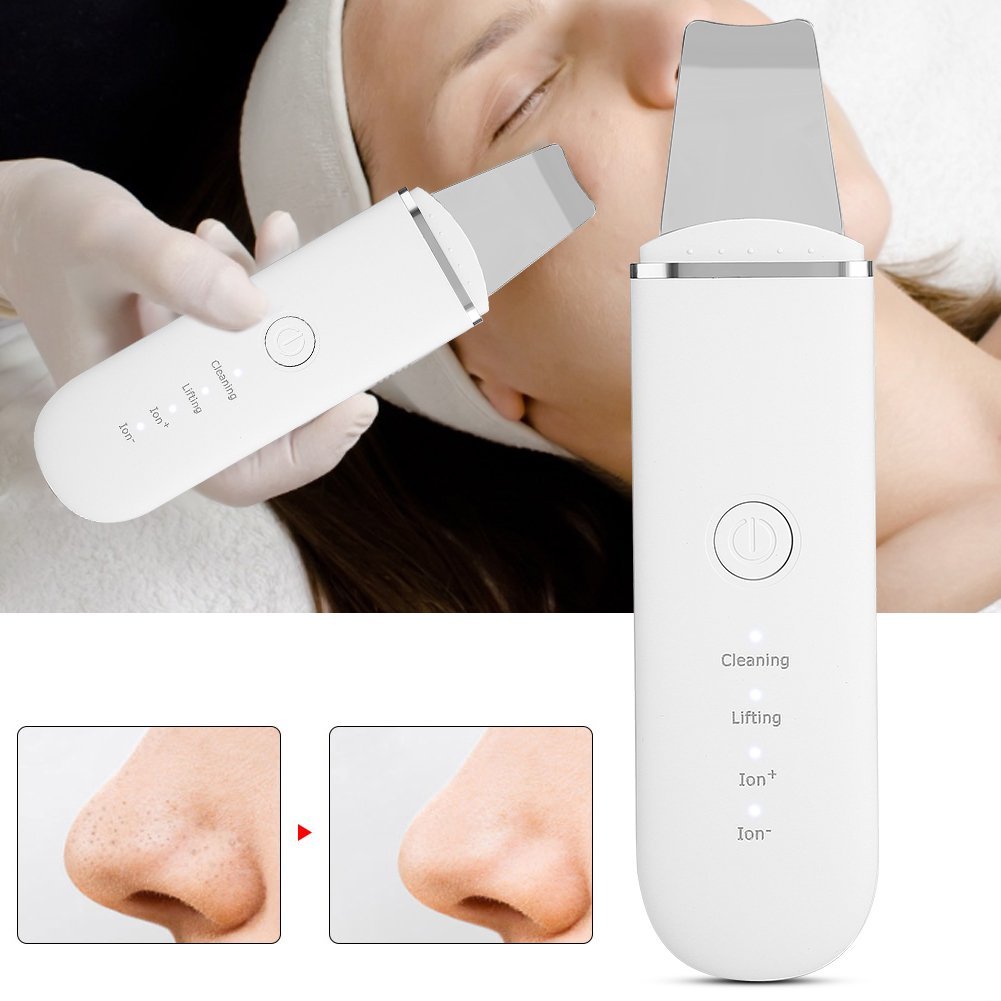Our skin’s outermost layer is called the epidermis. The epidermis consists of an outermost layer which is comprised of dead skin cells which provide a barrier against sun damage, bacteria, and so on. The dead skin cells layer collects a lot of dirt, debris, oil, and other impurities that aren’t good for your skin.
The ultrasonic skin scrubber makes use of ultrasound technology to gently exfoliate your skin, ridding it of dead skin cells and impurities. The exfoliation is made possible by the powerful ultrasonic pulses in the spatula which gives off 28,000 vibrations per second.

As the ultrasonic face spatula is moved along the skin, the pulses are combined with water to gently and effectively penetrate your skin. The vibrations and water get deep into your skin pores, loosening and removing debris, dirt, blackheads, dead skin cells, and oil, leaving you with a clean, smooth, and radiant face.
Ultrasonic skin scrubbers come with four modes, the patting mode, which is used on extra sensitive skin. The regular mode allows for customization of the spatulas pulses. Once the dead skin cells and other debris have been exfoliated, the flat side of the spatula is used to massage other skincare products into the skin gently.
Ultrasound brings about short-term, immediate changes as well as much longer-lasting results. It does so in a number of ways. The heat and vibrations from ultrasound can be designed to produce thermal effects at various depths of the skin and deeper tissues.
The heat produced by ultrasound waves increases blood flow providing the fibroblasts, the most common cells in the skin, in assisting the skin to rejuvenate itself and increase collagen production. Ultrasound waves are also capable of selectively injuring the skin to trigger a natural healing response. These combined thermal effects cause the skin lifting, tightening, and firming that can be experienced after ultrasound therapy. The improvements are due to the growth of new collagen and the straightening of elastin fiber in the skin.
Ultrasound energy used in this way also improves the superficial skin layer, exfoliating and smoothing it, and leading to what appears as an improvement in skin color and complexion. Some patients have reported that their skin also becomes less oily.

Researchers have found that ultrasound energy can temporarily change the structure of the outer skin layer, making it easier for topical applications to reach inner tissue layers. Rapid oscillations caused by ultrasound energy alter the permeability of the cell membranes and increases fibroblast activity and collagen formation.
Sonophoresis is the ability of ultrasound to improve how topical applications pass through the skin barrier. Cavitation, the phenomenon that generates small gas bubbles that grow in size with each additional exposure to ultrasound, causes structural disorder in the skin, leading to enhanced permeability. In particular, it has been established that low-frequency ultrasound in the range of 26 kHz is ideal for enhancing skin permeability. Such permeability can last up to 12 hours after ultrasound treatments. These findings open up new possibilities for combining ultrasound with topical skin rejuvenation agents.



